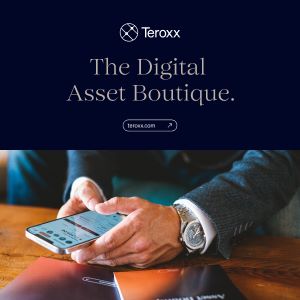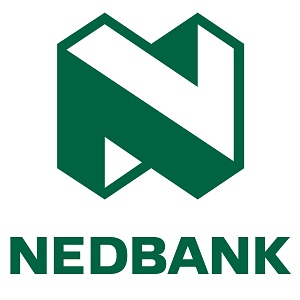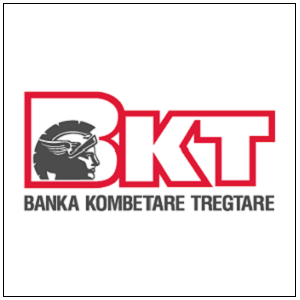Brand Strategy
Business Analytics & Branding: How to Use Data to Build Your Brand

Like any other industry, data is everything in the modern age of business. Your customers are constantly engaging with your brand through multiple channels, inputting a plethora of information every day, and it can feel all too overwhelming to comprehend it—yet this is precisely why your business should rely on it to create a more successful brand.
You might go for a third-party software to collate this data, or may even choose to enlist someone with an online Master of Business Analytics who can assist in collecting and analysing them appropriately—either is fine, but the most important thing is how does data build your brand in the first place?
What is branding?
We see it everywhere, and we may even use it ourselves—a brand can be an identity, a story, or a personality that distinguishes a company from its competitors. It is specifically targeted and transmitted to consumers of the products or services the company provides; Director of CEO Branding for San Jose-based company, Liquid Agency, and author of ‘The Brand Gap’, Marty Neumeier, pertinently describes branding as ‘a result’ and ‘a customer’s gut feeling about a product, service or company.’
Creating a brand involves researching, developing and strategising, finally applying all of this together to make customers associate your brand with the product or service you are providing. Logos, billboards, advertisements etc. are all vital elements to creating a good brand, but it is not just that. Things such as good customer service, professionalism, credibility, workplace experience, partnership and marketing are also crucial for creating a reputable brand.
Moreover, besides helping consumers to distinguish your company from others, having a successful brand can also create a better company reputation, which can affect a variety of other groups outside of consumers such as employees, investors, shareholders, providers and distributors.
How data can inform branding decisions
So how does data play a role in building your brand? Information and insights from consumers and markets can play a fundamental role in guiding the development of your brand image, messaging and overall business strategy. Integrating this data can allow you to understand the valuable insights that drive decision-making and enhance customer engagement with your brand. For example, they can uncover the motivations or emotions that fuel their loyalty or preference towards your business.
Types of data
Consumer packaged goods, or CPG, data is the umbrella term used to describe the collection of information businesses accumulate through any sales made in the products or services produced.
Retail data
This can include data from pricing, promotions, sales, assortments, and market share information. Avoiding the ‘guesswork’ and seriously doing retail data analytics can help your brand become a dominant force among competitors. Leveraging these insights can hone a reputable brand for customers, and if done well, it can of course lead to higher profits. Moreover, it can help you to unleash your brand’s full potential, empower you when making critical decisions relating to it and deliver better customer experiences.
Consumer insights
In the digital age and the new era of personalised consumption, customer insights are more valuable than ever. Such data can include customer demographics, purchasing behaviours and motivations, as well as customer loyalty and priorities.
Having these insights can be crucial to ensure your business is correctly tailoring to the wants and needs of your customers, and more importantly, that your brand is being moulded in a way that effectively attracts the demographic you intend to attract. It can give your company an edge over competitors too. When customers feel understood and attended to, they are naturally more likely to return and become advocates for your business.
Marketing data
There is an inseparable link between branding and marketing. From advertising costs to search engine optimisation (SEO) rankings, this information allows you to understand whether the money you are spending on advertisements is working or not. Around 60% of businesses in Australia fail within the first three years of operation, and 20% within just the first, so constantly tracking marketing data will allow you to secure a place for your brand in the most profitable markets.

Marketing data
Messaging
Your brand is also a message, and data can prove to be a solid foundation for transmitting a powerful message that can speak to customers. From knowing what your customers want to hear to why they value your product, using data can help you frame your brand in a way that speaks to what customers care most about.
Storytelling
Data-driven storytelling is a powerful way to forge an emotional connection between consumers and a brand. Data can make your brand align with the immediate interests of customers.
A great example is Spotify, which uses data-based storytelling compiled in its end-of-the-year Spotify Wrapped breakdown. The platform collects the user’s listening data throughout the year; it then highlights the various information the user has in their listening patterns, ranging from how many minutes they listened to to which artists they listened to most. This feature has become one of the most distinguishing features of Spotify as a brand, along with driving extraordinary engagement with its customer base.
Content strategy
In the age of social media, content is everything—it is also a powerful tool to engage with audiences and mould businesses as not only a product or service but as a resource. Audiences typically engage in content that seems useful to them, and extracting data insights for content creation that is worthwhile for expanding your brand and is resonant and purposeful for your audience (and potential customers). These can be short and long-form videos, blog posts, and various other formats.
For example, LEGO Ideas serves as a model for developing a brand’s spirit through creative content strategy. The platform allows fans to submit new concepts for LEGO sets and proposals are voted on by others. Chosen ideas are then turned into sets by LEGO and the fan designer receives 1% of the royalties. Various LEGO Ideas sets have become a definitive part of the brand too. Having this strategy effectively made LEGO transition from a simple building set primarily targeted towards children to becoming a community-oriented brand that has expanded into the adult market.
Making branding changes
Rebranding is an inevitable and painful process of running a business. As we now know a brand is not merely just a logo, symbol or advertisement, rebranding as such is not merely just tweaking or crafting these things—it is something that would affect every single part of your business, and there are a few things to be mindful of when engaging in this process.
Be smooth with it
This may be particularly important if you want to make big changes. Try firing a few bullets first as a means of testing rather than pushing for a full transformation immediately. Doing one small piece at a time can inform you on how to calibrate your overarching rebranding strategy in the future. You may even find that a whole re-makeover was not even necessary in the first place.
Stay recognisable
You have already cultivated a loyal customer base through your current brand, so when rebranding you should honour that too. This means not to change things too quickly. You may choose to do a complete overhaul or a simple refresh, but it is important to consciously keep pace with your audience. It is also helpful to view the rebranding process as a mere means to an end, and not an end in itself.
Take feedback seriously
It is very important to not take any negative feedback personally; at the same time, it is also crucial to take it seriously. One of the biggest obstacles to a smooth rebranding process is internal resistance, and that is okay, as not everyone will agree with each other.
21st-century branding requires data. Of course, creating a brand is never easy, but data can be a valuable tool for you to navigate its twists and turns.

























































